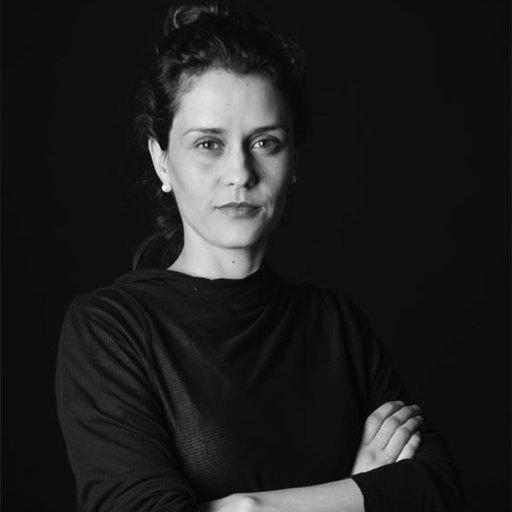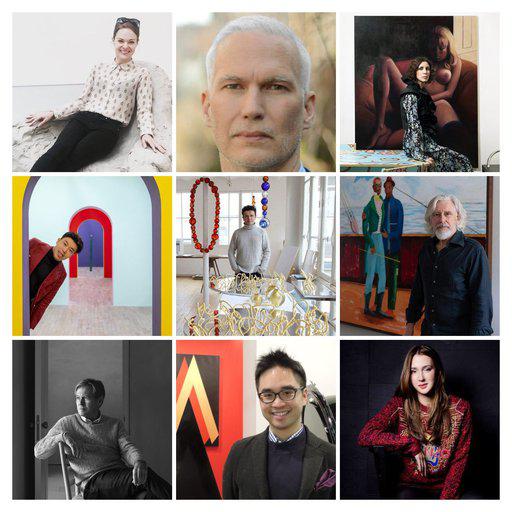Sculpture has come a long way over the last century. Once synonymous with statuary and monuments—the kind of triumphalist hunks of stone or metal seen in public squares around the world—the medium has evolved in the hands of modern and contemporary artists to become something much more personal, intimate, engaging, and thought—provoking. It has also become eminently accessible for the average collector, who no longer needs a sprawling estate or massive courtyards to own stunning pieces. For a primer on the basics of collecting contemporary sculpture, we spoke to SculptureCenter executive director Mary Ceruti—whose Long Island City institution has been pushing the vanguard of the medium forward since its founding in 1928—about what aspiring collectors should look for in a piece, how it can be displayed in their home, and why sculpture should be a part of their everyday lives. (This interview is a condensed version of the full Q&A, which you can read on our blog for a master class in the medium.)
What advice would you give someone who is interested in adding sculpture to their collection?
I would give the same advice to somebody who wanted to collect sculpture that I would to anyone who wanted to collect art in general, which is to look at a lot of work and figure out what attracts you and what you're interested in, and then familiarize yourself and become comfortable with what excites you about different works. With sculpture, I would tell people not to be afraid, that it comes in all sizes and all materials, so it can fit in someone's life in different ways. One of the things that I have personally always found exciting about sculpture is that it occupies the same space that we do, so you have a physical interaction with it that you don't with all other art forms, say video art and photography. So some people worry that they don't have room for sculpture, but I think if they look around their house they'll find that they have all sorts of objects that may or may not be functional—vases of flowers, souvenirs, and other decorative objects. So you could easily make room if you decide that is something you're excited about and want to live with. People can always find places in their homes.
How would you define sculpture?
I have two ways to answer that. At the SculptureCenter we purposefully don't define sculpture—we don't have a definition that we work with—because we allow the artist to define it for themselves. So programmatically we work with every media, and in every given exhibition there might be painting, video, and photography as well as what we think of traditionally as sculpture. That's because even though we're called SculptureCenter, we're not so interested in protecting the territory of sculpture—we're more interested in looking at what's happening in contemporary art from the perspective of sculpture. I think that's an important thing to do, because there are artists who call themselves sculptors and make objects and three-dimensional things and are also working in video, photography, film, and performance. But sculpture itself has specific requirements: it takes up space in a different type of way than other art forms do, and then the artist is grappling with very specific things like gravity, mass, weight, volume, and surface-to-structure issues that are inherent to making sculpture. As for what's happening in contemporary sculpture, you often can't summarize it. There are still artists who have things fabricated, there are still artists who make things with their own hands, there are still artists who cast or mold or carve. All of these processes are completely present in the field right now, and all of those modes of production are still active.
Then you have someone like Lawrence Weiner, who describes himself as a sculptor even though most people think of him as a text artist. How is his work sculpture?
That is a critical position that he takes, and which I support in the same way that someone like Joseph Beuys is a sculptor and Matthew Barney has always made a point of calling himself a sculptor even though he increasingly works in film and performance. That's the prerogative of the artist, to identify himself or herself in that way. And there are interesting reasons for that, to rethink the way that artwork occupies that space. If you saw Lawrence's show at the Whitney Museum, it was very sculptural. There was a lot of text work there, but it very much was about a spatial understanding of the space, and the text unfolded in the space—that's always been critical to his work.
To look at it from the opposite perspective, if one were to see a piece of pottery side by side with a piece of ceramic sculpture, how would one be able to tell the difference between the two?
A big part of that is the context in which the artist and the audience are experiencing that work. I think a very contemporary example is Shio Kusaka, who makes these gorgeous ceramics, some of which maybe lean toward the functional, but she has positioned completely herself within the fine-art context rather than craft. So is it about intention? Kind of, and whether someone sees their work falling within the craft conversation rather than a contemporary art conversation. But certainly at this moment artists are all over ceramics and glass, making a lot of very interesting work that draws on the craft tradition and acknowledges the craft tradition within those objects—like Josiah McElheny and Fred Wilson. So in the end, from a collector's point of view, it doesn't really matter if it comes from the craft world or the art world if it's something that you enjoy, that you respond to, that has an aesthetic presence that's important to you.
What should one take into consideration when regarding a piece of sculpture?
You should walk around it, of course, and see it in a 360-degree context. Then you should think about how it relates to the ground and the space around it—that's always an issue for a sculptor. The other thing that I think is great about sculpture and that I think is important when you're collecting sculpture on a smaller scale—things that can fit on a table, or a shelf—is the fact that you can pick it up and hold it, and it has weight. It's an amazing thing. For instance, Ugo Rondinone's cast-bronze apple is painted very realistically, so that when you apprehend it you absolutely mistake it for an apple. But it's cast in bronze and it's filled with lead—it weighs so much more than you would expect, so it's a very strange experience when you pick it up. This kind of haptic experience is something that only sculpture offers you, and only the collector gets to experience the piece in that way.
What are some of the ways that people live with sculpture? How do they incorporate sculpture into their homes, and into their lives?
It's as simple as putting a sculpture on your side table, or a piece in a fireplace, so that almost everywhere you look there is something unusual. Like putting a sculpture in the entrance hall so that when people come in they encounter it. I've seen the whole gamut, and it's only limited by the collector's ambition and imagination.
Would you recommend that people buy sculpture when they are considering building a collection?
Absolutely. The only reason someone who is really interested in contemporary art wouldn't collect sculpture is because they have some prejudice about how much space they have, which I think they could get over. Since the field of sculpture has expanded to engage almost all the other media, it's so much a part of the contemporary art discourse that to ignore it is to ignore a vast part of what contemporary art is about. You can't really avoid it.
In a funny way, that puts a positive spin on Barnett Newman's famous quote that "sculpture is what you bump into when you back up to see a painting."
It's true—it's unavoidable! And that's not a bad thing.
Click here to read more about movements in contemporary sculpture, sculpture-collecting faux pas, the use of the pedestal, and the best places to see sculpture in New York and beyond.
Expert EyeSculptureCenter Director Mary Ceruti on Collecting Sculpture























